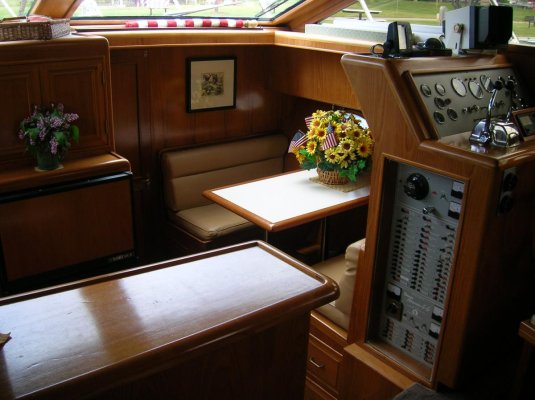ranger58sb
Guru
Thinking of changing plans to a cockpit motoryacht?
Lots of ways that could probably work well enough. You can often run it more like a trawler, sea states permitting and with some attention to engine operations. And short, faster hops might not break your (fuel) bank anyway. We sometimes go half a season or more before needing to refuel...
If looking for a specific boat, there's a though to write to everyone that owns that particular boat. Although there's some work involved, you can get owners names from the state it's registered in and just mail letters. I've done that a few times with excellent success. It's surprising to find there are a ton of owners "getting ready" to sell, but haven't listed their boat yet, and often there's a good deal waiting. You become a quick and easy solution to their problem
There are owner's clubs too; it's usually easy enough to join to ask about specific models and so forth. Availability, known faults if any, etc.
You really just have to sort of commit to a fast-boat lifestyle. These big turbo motors gunk up with soot (coking) unless you are at "cruising speed" (80% of WOT) most of the time.
Lots of threads here and on boatdiesel suggesting that's not true as a blanket statement. And it may be more applicable to some diesels versus others. Proper load, proper engine temps, etc. required... but that doesn't always seem to equate to 80% WOT.
FWIW, our diesels will get to the correct operating range at 1100 RPM and above, and once there, will remain there (as near as I can tell) at all RPM. We're not really heavy-duty anglers, but in April/May we do spend lots of hours trolling on one engine at idle... afrer bringing load/temps up, and with a follow-on quick run on plane as we return to the marina. Also, I think our average on this current trip, approx 585 NM so far, has been about 8 knots, and even that was mostly affected by a 100 NM leg at planing speed. Note: we do not have a trawler.
-Chris



 Gas engines are a turn
Gas engines are a turn